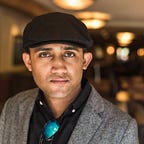Setting the Startup World on FiRe with Five More FiReStarters
By Charly Kuecks
Ed Butler of the BBC hosted a panel titled “FiReStarters II: Five Companies Improving the World,” where he interviewed five more CEOs of FiRestarter companies. From cybersecurity to parent-teacher communication, these startups are breaking new ground and making compelling tech applications.
You can read here about Part I of this two-part FiReStarter panel series.
“You have been hacked, you’re under attack. What do you do about it?” Rothrock began his presentation with this rhetorical question, immediately connecting his service to urgent real-world problems.
RedSeal differentiates itself in a crowded cybersecurity market by consulting companies on the security vulnerabilities that are most likely to affect their bottom line. Rothrock pointed to the recent Equifax hack, which was devastating to consumers as well as halving the firm’s stock price. Rothrock claimed that RedSeal’s tools would have detected the issue that led to the Equifax breach.
Rothrock’s experience sitting on several corporate boards, as well as his background in investing, means that he is able to see the big picture on corporate security. When asked about the value RedSeal adds, Rothrock responded that nobody calculates every path and downstream risk the way his firm does.
“Even a small network might have millions of vulnerabilities,” he said. “We focus on the ones that matter.”
2) Haydale Technologies — Trevor Rudderham
Haydale may be a familiar name to FiRe attendees: it’s the U.S. subsidiary of UK-based Haydale, which was a FiReStarter two years ago.
Rudderham discussed his firm’s world leading capability in silicon carbide fibers and microfibers. Silicon carbide is used in aerospace and military applications.
These silicon carbide fibers are one one-hundredth the diameter of a human hair. Rudderham pointed out that this type of fiber was invented forty years ago at the University of Utah not far from the conference venue.
He explained the difference between graphene. another carbon-based nanomaterial sold by Haydale, and silicon carbide. The latter really shines when it comes to strength, and is effective in metal and ceramics. Graphene is high in electrical conductivity and is well-suited to improving polymers.
Rudderham’s goals as a FIRestarter can be summed up as,”make more from less.” He calls his philosophy “functional intensity” — getting more function per weight and volume.
3) ParentSquare — Anupama Vaid
Educators are implementing project-based learning to capture the interest of students in contrast to prior models of one-size-fits-all education.
ParentSquare’s CEO Anupama Vaid believes that her software is especially well-suited to meeting parents of students where they are, while not overburdening already-busy teachers. Unlike existing social media platforms whose workflows are not designed with teachers in mind, ParentSquare optimizes parent-teacher communication by putting the scholastic use case first.
Vaid claimed that as much as 50% of testing variance is caused by non-classroom factors originating in the home. ParentSquare’s mission is the help educators bring parents “into the fold,” regardless of family background.
With ParentSquare, it’s seamless for teachers to share with parents. The app can send email, voicemail, or an app notification. These messages are delivered in language that parents understand, including a built-in translation capability.
Vaid is passionate about empowering educators to teach kids to learn how to learn. She deemed this the “most important twenty-first century skill.”
4) TruTag Technologies — Hank C. K. Wuh
TruTag Technologies was conceived to solve the problem of counterfeiting. The impact of counterfeiting is large in the food and drug industries. The CTO of TruTag developed an optical memory device that is the size of a piece of dust. This tag allows consumers to authenticate food or pills before they ate or swallowed them.
The second application of the technology was discovered in Wuh’s words, “almost by accident.” TruTag developed a handheld optical reader that can process 400 unique colors, which is up to 10 times more precise than the human eye.
This camera has enormous applications, including the ability to identify tumors through imaging tissues.
Read the rest of our stories on our Medium blog and follow us on Twitter
